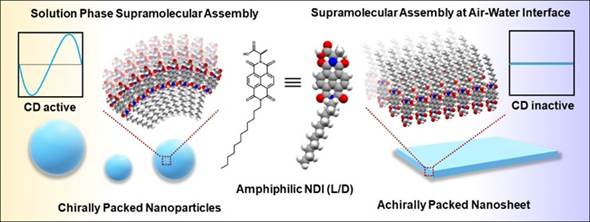Ministry of Science & Technology
Control over Assembling Nanostructures can help Create New Materials useful for Biomedicine, Electronics
Posted On:
27 SEP 2024 8:51PM by PIB Delhi
A new breakthrough in understanding the process of controlling the assembly of tiny molecular units into complex structures holds promise for creating new materials that could revolutionize industries like electronics, healthcare, and beyond.
Supramolecular self-assembly is a process where small molecules spontaneously organize into larger, well-defined structures without external direction. Understanding this process is crucial for creating new organic materials that can be used to develop nanodevices—tiny machines useful for performing specific tasks at the molecular level.
A group of Indian researchers from the Centre for Nano and Soft Matter Sciences (CeNS), Bengaluru, in collaboration with the researchers from Jawaharlal Nehru Centre for Advanced Scientific Research (JNCASR), Bengaluru both autonomous institutes under Department of Science and Technology (DST) explored the self-assembly behaviour of specific molecules called chiral amphiphilic naphthalene diimide derivatives (NDI-L and NDI-D). They experimented with two different methods of assembling these molecules-- Solution Phase Assembly and Air-Water Interface Assembly.
The former involved assembling of molecules in a liquid solution leading to formation of spherical nanoparticles. These tiny particles displayed unique optical properties, such as strong mirror-imaged circular dichroism (CD) signals, which are important for materials that interact with light in precise ways.
The air water interface assembly involved assembling of molecules at the boundary between air and water, which the researchers also tested. At the air-water interface, instead of forming spherical nanoparticles, the molecules arranged themselves into flat, two-dimensional layers with irregular edges. Interestingly, these layers did not exhibit the same optical properties as the solution-assembled nanoparticles, indicating that the environment in which molecules assemble plays a critical role in determining their final structure and properties.
This discovery, recently published in ACS Applied Nano Materials, opens up exciting possibilities for creating new materials with tailored properties. For example, in the field of biomedicine, such materials could be used to develop more effective drug delivery systems that target specific areas of the body. In electronics, these materials could lead to the development of faster, more efficient devices.
This research by Dr. Goutam Ghosh, Mr. V.M.T. Naidu Moram and Dr. Padmanabhan Viswanath from CeNS along with Mr. Tarak Nath Das and Prof. Tapas Kumar Maji from JNCASR showcases the potential of using different assembly techniques to guide the formation of nanostructures, enabling scientists to create materials with specific functionalities. The findings not only advance the field of material science but also provide a foundation for future innovations in various industries.
Publication Link: https://doi.org/10.1021/acsanm.4c03206.

*****
AG
(Release ID: 2059688)
Visitor Counter : 1340
Read this release in:
Hindi